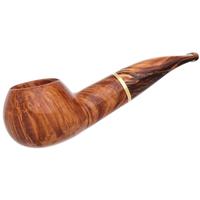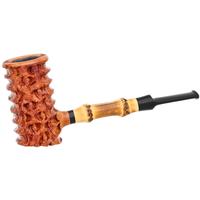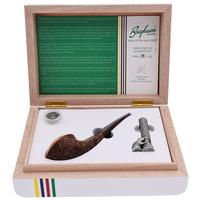The study can be read here, but a press release from the university should suffice. Click here.
Excerpted:
The study looked at two pipes — one from the period before indigenous people had contact with Euro-Americans and one from after. The post-contact pipe dates to around the end of the 18th century, while the pre-contact pipe is estimated to be between 1334 and 1524 years old. Brownstein and his team also tested five full bowls of a variety of commonly smoked plants in each of five experimental replica pipes, and then divided the pipes into parts — an effort to classify the species in the two artifacts, detect compounds in the smoked plant, and replicate the archaeological preservation process.
Ultimately, the research team found a biomarker for nicotine in both the pre-contact and post-contact pipes, indicating that tobacco had probably been smoked in each. Using metabolomics, the team saw specifically that the tobacco species N. quadrivalvis — a species now extremely rare in Washington state — had been smoked out of the pre-contact pipe, along with R. glabra — a species of sumac — which was often mixed with tobacco for its medicinal qualities and to improve the taste of the smoke. This study marks the first scientific proof of a non-tobacco plant in an archaeological pipe.
Excerpted:
The study looked at two pipes — one from the period before indigenous people had contact with Euro-Americans and one from after. The post-contact pipe dates to around the end of the 18th century, while the pre-contact pipe is estimated to be between 1334 and 1524 years old. Brownstein and his team also tested five full bowls of a variety of commonly smoked plants in each of five experimental replica pipes, and then divided the pipes into parts — an effort to classify the species in the two artifacts, detect compounds in the smoked plant, and replicate the archaeological preservation process.
Ultimately, the research team found a biomarker for nicotine in both the pre-contact and post-contact pipes, indicating that tobacco had probably been smoked in each. Using metabolomics, the team saw specifically that the tobacco species N. quadrivalvis — a species now extremely rare in Washington state — had been smoked out of the pre-contact pipe, along with R. glabra — a species of sumac — which was often mixed with tobacco for its medicinal qualities and to improve the taste of the smoke. This study marks the first scientific proof of a non-tobacco plant in an archaeological pipe.












